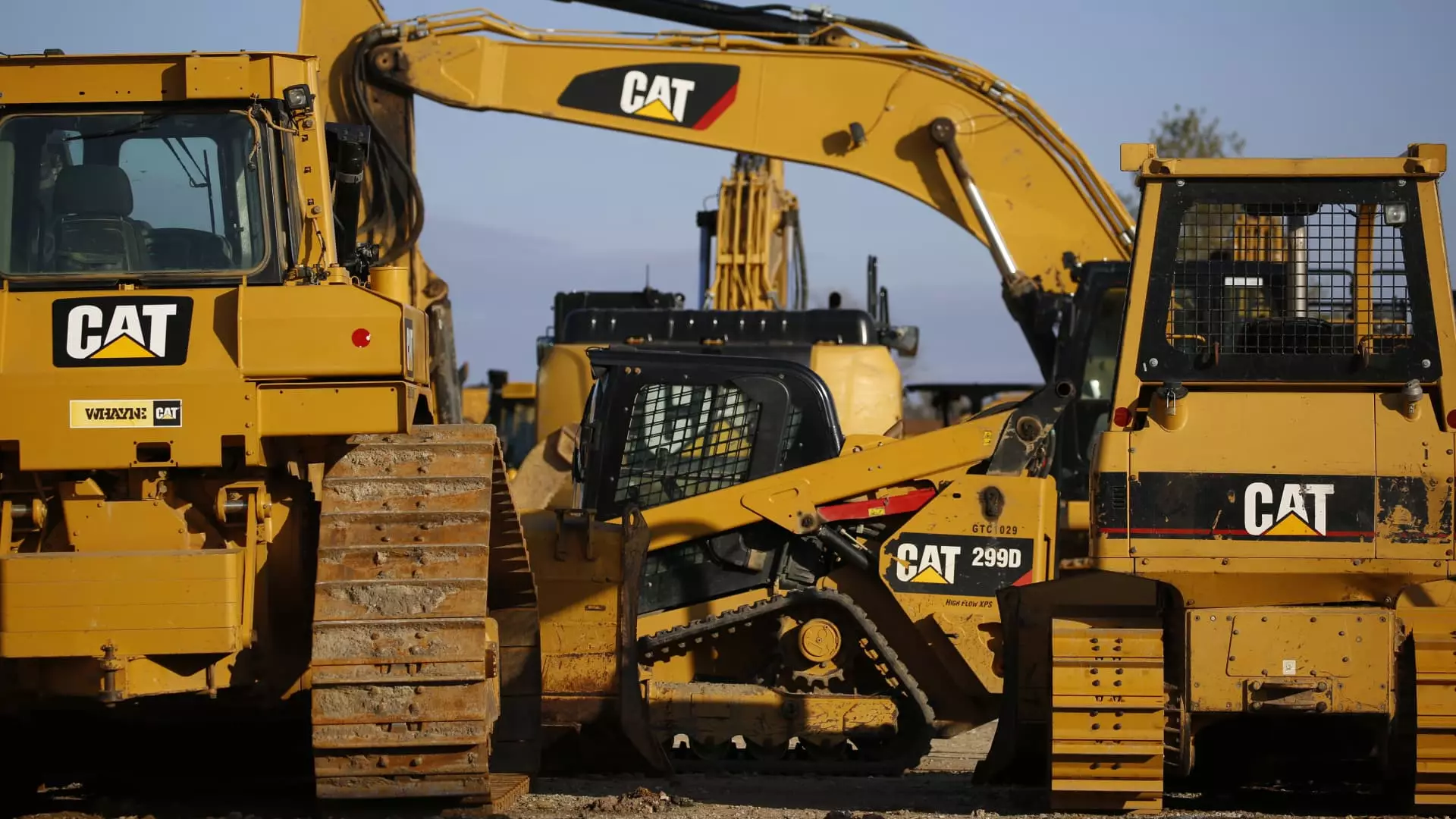The stock market is currently in a precarious position, particularly for technology stocks that are experiencing a notable shift in momentum. This week, Microsoft exhibited an alarming technical indicator that has captivated the attention of investors and analysts alike: a “death cross.” This term signifies when a company’s 50-day moving average dips below its 200-day average, typically interpreted as a precursor to further declines. As we delve into this phenomenon, we will analyze various sectors and key companies that might soon follow suit, grappling with the pressures of an unpredictable economic landscape.
Recent trends indicate a volatile atmosphere for the entire financial market. Major stock indices are on track for disappointing weekly and monthly performances, driven by numerous adverse factors. Geopolitical tensions and trade conflicts, alongside soaring valuations—especially following the AI-driven stock rally of the previous year—have many analysts questioning the sustainability of growth. Compounding this uncertainty, economic reports suggest potential slumps in growth and a deteriorating consumer outlook. Indeed, investor sentiment is teetering on the edge, with protective positions becoming increasingly common in anticipation of further market adjustments.
The formation of a death cross is not merely a technical curiosity; it carries significant psychological weight in trading circles. Investors often treat this indicator as a harbinger of bearish trends, which can create a self-fulfilling prophecy as traders hastily exit positions to limit losses, further pushing down stock prices. Thus, identifying stocks on the verge of this pattern can offer critical insights into potential future movements within the market.
Recent data from CNBC Pro has revealed several significant players approaching this ominous threshold. With careful analysis of the relationship between their moving averages, we can ascertain which stocks might follow in Microsoft’s footsteps.
Several companies have been pinpointed as nearing the ominous death cross formation. Among them is Caterpillar, whose 50-day moving average, currently hovering around $365, is closing in on a 200-day average of approximately $361. The company’s stock has faced considerable pressure, notably losing over 7% this month primarily influenced by rising trade tensions and mixed quarterly results.
Similarly, Las Vegas Sands finds itself precariously positioned, with its short-term average only slightly above its long-term counterpart. A 13% decline year-to-date reflects broader challenges in the tourism and leisure sector. Vulcan Materials, another notable mention, sees its moving averages dangerously converging. With the stock down about 4% in 2025 while its sector has generally improved, the looming death cross adds further uncertainty.
Meanwhile, Eaton has indeed crossed into death cross territory, down over 13% this year as the AI hype fades. Despite strong performances over the last year, investors are warily watching Eaton as its reliance on tech investment comes under scrutiny. Ross Stores and J.B. Hunt Transport Services also show troubling signs, both stocks suffering losses amid an environment perceived as hostile to consumer spending.
Trane Technologies has not encountered a death cross since mid-2022, yet its current path suggests it is approaching this technical indicator once again. The stock is down about 6% year-to-date, reflecting challenges within the market as it grapples with the impacts of fluctuating energy policies. Additionally, Hubbell is just about $3 away from forming a death cross, with its previous experience in this pattern during a bear market still fresh in the minds of investors.
Lastly, PTC has already confirmed a death cross formation, and its stock is adjusting to this bearish sentiment, with the lingering impact of market conditions shifting investor strategies.
As the market sits at a crossroads, the emergence of the death cross in multiple stocks signals pressing concerns about the overall economic climate. Investors must approach these indicators with caution and strategic foresight, implementing risk management tactics to safeguard portfolios. The convergence of moving averages in flagship stocks like Microsoft and others highlights wider market vulnerabilities that could influence investment decisions across the board.
In this uncertain environment, knowing which companies are under duress is essential for any investor hoping to navigate the choppy waters ahead. As conditions evolve, investors must remain vigilant, ready to adapt to changing trends that may dictate the stock market’s future trajectory.

